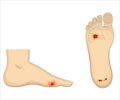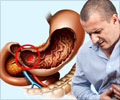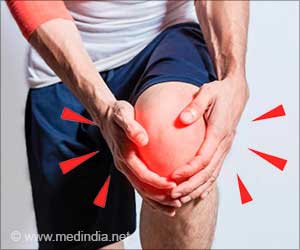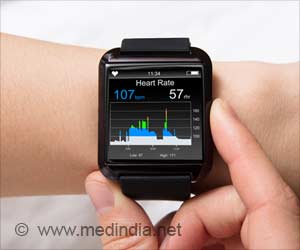Australian scientists with the Industrial Research Limited have demonstrated that laser light scattering techniques could be used to predict foot ulcers in diabetics.

In the '90s, the IRL team led by senior scientist Mike Andrews was able to develop a reliable way of sorting and grading timber, according to its quality, early in the production chain. They mapped the fibre type and orientation within wood – the key to predicting how timber will warp as it dries – by illuminating the fibres with a small laser spot and seeing how the light was scattered. They then went on to investigate how IRL’s growing ability with light scatter techniques could be used in other areas, including medical optical sensing.
One promising use for the technology is in skin imaging. IRL has developed a device which measures flow in the blood-rich dermis layer of skin just below the outer surface.
A football-mad German student working with the IRL team was the initial guinea pig. “We used laser speckle to measure the blood flow in his toes each morning, after he had played football at lunchtime and later in the day, and were able to identify what low- and high-flow levels look like.”
The global rise in diabetes prompted the team to apply the technology to measuring areas of low blood flow in the feet of diabetics as a possible way of predicting where foot ulcers might occur.
IRL has found a way of equating the data gleaned from using laser speckle to a standard, widely understood, medical measurement. The technology is currently being trialled by Counties Manukau District Health Board.
Another equally promising application is predicting the onset of diabetes by looking for blood flow anomalies in the retina, which lines the back of the eye. Deterioration of the retina is one of the first signs of diabetes.
Dr Andrews says the project is still at the technical development stage, but is likely to attract keen interest from clinicians as very few methods of measuring blood flow in the back of the eye currently exist.
The technology may also eventually be used to guide plastic surgeons who have to map blood vessels when taking skin from one part of the body and attaching it to another.
One promising use for the technology is in skin imaging. IRL has developed a device which measures flow in the blood-rich dermis layer of skin just below the outer surface.
A football-mad German student working with the IRL team was the initial guinea pig. “We used laser speckle to measure the blood flow in his toes each morning, after he had played football at lunchtime and later in the day, and were able to identify what low- and high-flow levels look like.”
The global rise in diabetes prompted the team to apply the technology to measuring areas of low blood flow in the feet of diabetics as a possible way of predicting where foot ulcers might occur.
IRL has found a way of equating the data gleaned from using laser speckle to a standard, widely understood, medical measurement. The technology is currently being trialled by Counties Manukau District Health Board.
Another equally promising application is predicting the onset of diabetes by looking for blood flow anomalies in the retina, which lines the back of the eye. Deterioration of the retina is one of the first signs of diabetes.
Advertisement
Dr Andrews says the project is still at the technical development stage, but is likely to attract keen interest from clinicians as very few methods of measuring blood flow in the back of the eye currently exist.
Advertisement
The technology may also eventually be used to guide plastic surgeons who have to map blood vessels when taking skin from one part of the body and attaching it to another.
Source-Medindia













